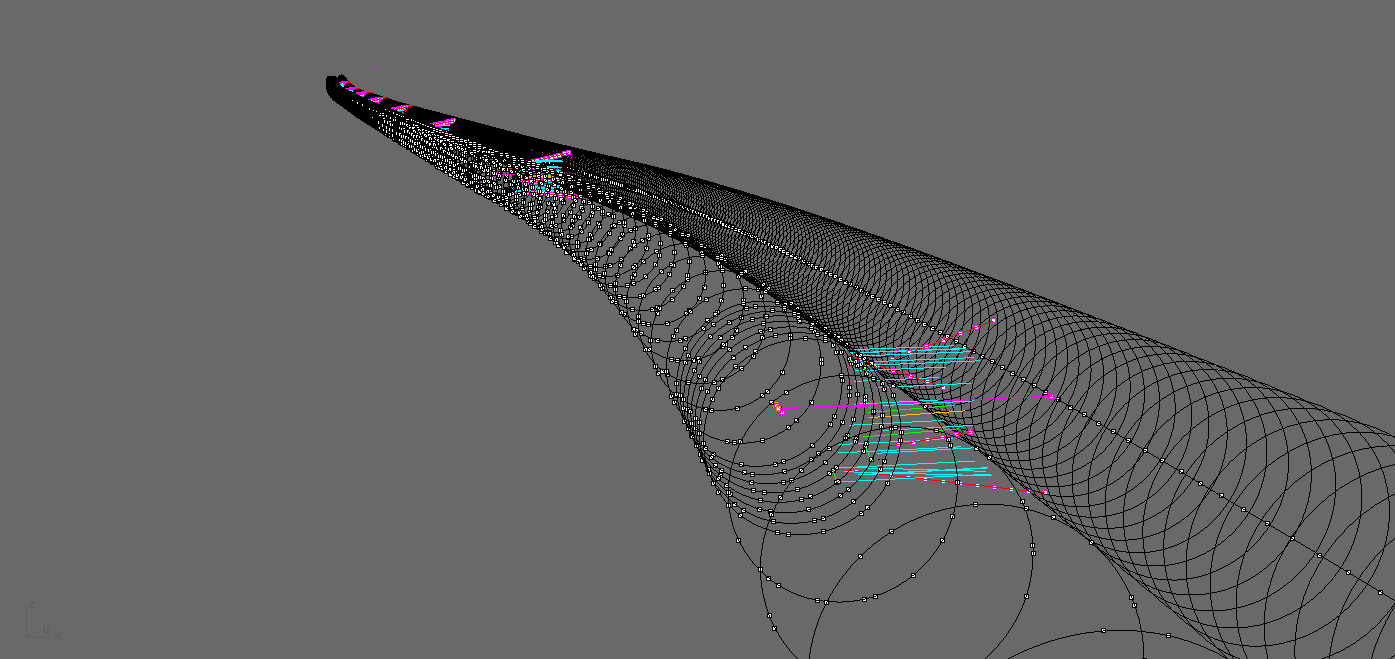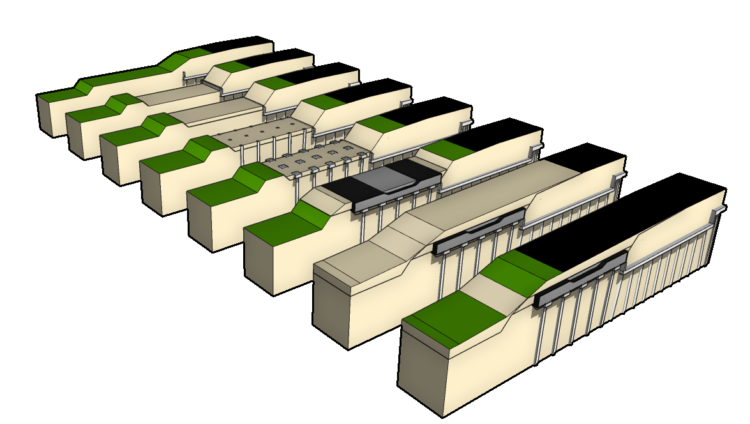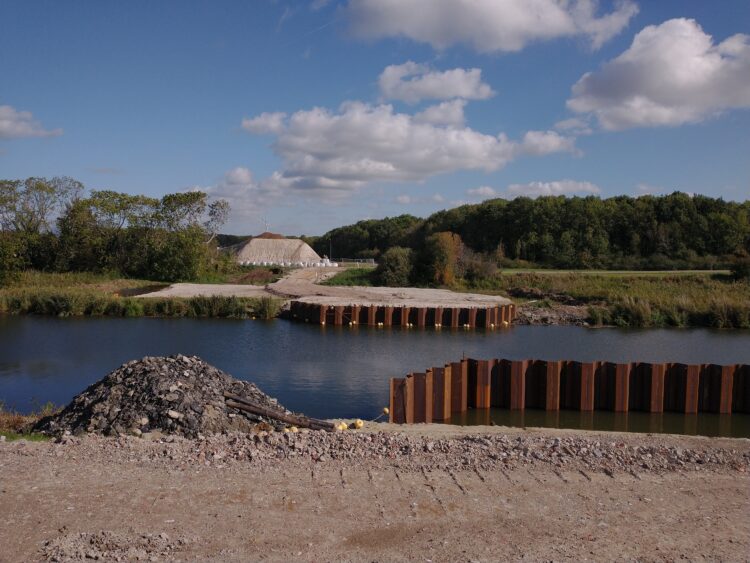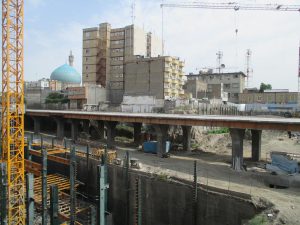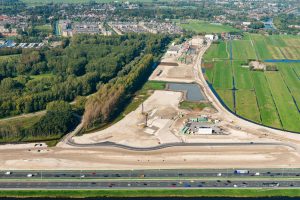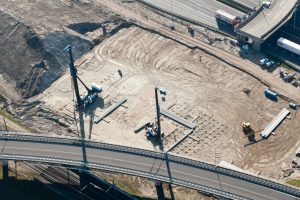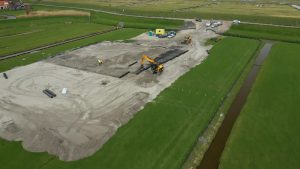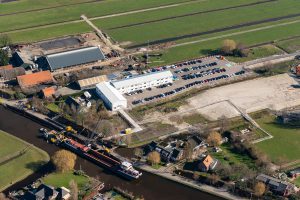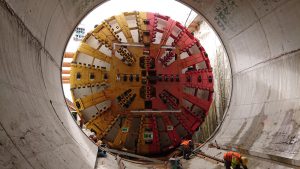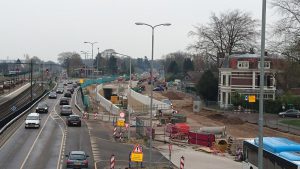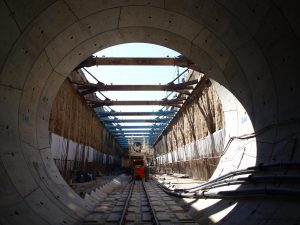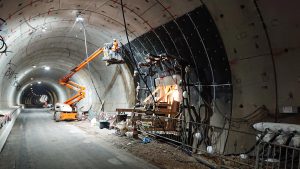4D visualisation bored tunnel RijnlandRoute
To make the cross passages between the tubes of the RijnlandRoute bored tunnel, an opening has to be made in the concrete lining of the tunnel. To make this possible, a steel frame has been installed on the inside of the tunnel to prevent excessive deformation during the excavation of the cross passage. In addition, a frozen soil bory has been made in the subsoil. This is done by drilling freezing lances, through the concrete segments, into the ground from one tunnel tube to the other tunnel tube. With the help of these closed pipes, brine is injected and the ground is frozen, which allows for sufficient stand-up time to install shotcrete and a permanent lining.
The position of the steel frame is related to the position of the segments of the tunnel. It is therefore important that the freezing lances are made at the right place and in the right direction. As a rule the cross passages are not perpendicular, but at an angle to the main tunnel. To complicate things further, some of the lances are installed before the passage of the TBM for second tunnel tube.
The lances cannot be too long, because the TBM would damage them. At the same time, they should not be too short, as this would considerably lengthen the time required for the ground to freeze. From experience with the drilling of the first tube, it was known that there can be up to 10 cm deviation in the position of the tunnel tube perpendicular to the axis of the tunnel, but also up to 30 cm deviation in the longitudinal direction.
In order to ensure that the freezing lances were installed at the correct geometry, a parametric model was created in which the position of the first tunnel tube was determined by means of monitoring. The correct direction and length of the freezing lances were determined, based on the theoretical position of the second tube. This theoretical position can have any possible combined deviations to the side, up- or downwards, and longitudinally within a known bandwidth.
The parametric model allowed to map the maximum and minimum length and direction of each freeze-pipe for all possible scenarios.


